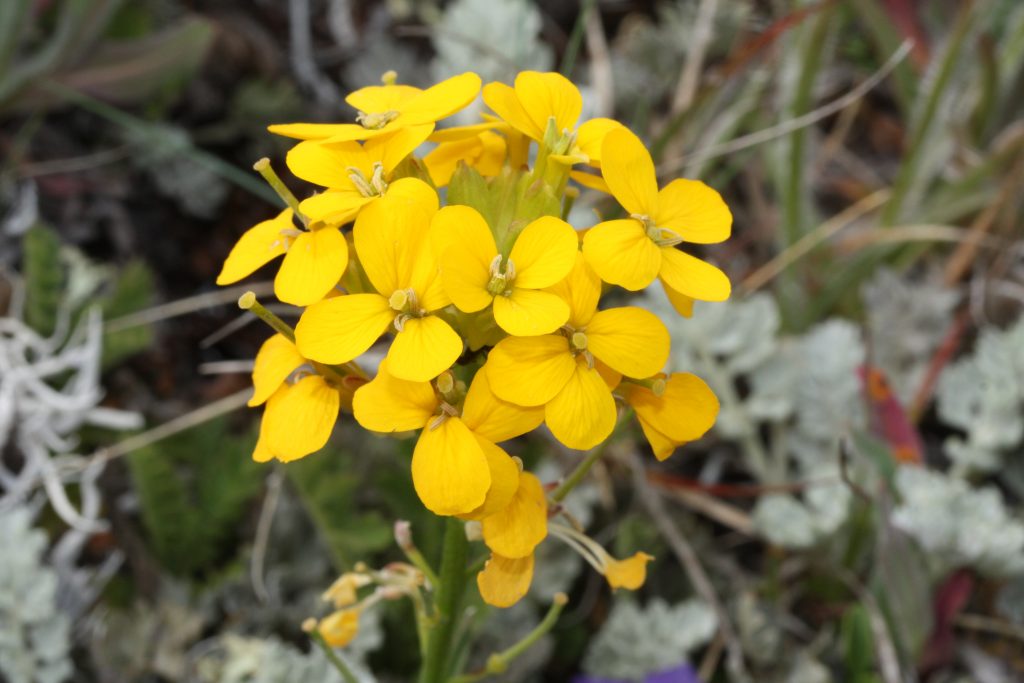
Also known as sanddune wallflower and prairie rocket, this herbaceous biennial or perennial is native to central and western North America and is a member of the mustard family, Brassicaceae, that also includes cabbage, alyssum, and stock. The plant grows 1-2′ tall and forms a basal rosette of narrow oblong leaves that are up to 3″ long. From late spring to mid summer, dense rounded clusters of yellow, orange, reddish, purple or almost white flowers appear on top of leafy stems. The flowers are 3/4″ wide, have 4 petals, and are attractive to bees, butterflies and other pollinators. The 4″ long seed pod is 4- angled and hangs almost parallel to the stem. Western wallflower tolerates drought and lean soil, and is a good choice for butterfly, native plant, and rock gardens especially in xeriscapes. The genus name, Erysimum, is from the Greek word eryo meaning to drag . The specific epithet, capitatum, comes from the Latin word caput meaning head and refers to the dense rounded inflorescence.
Type: Herbaceous perennial or biennial
Bloom: Dense rounded clusters of yellow, orange, red, purple, or nearly white flowers from late spring to med summer
Size: 12-24″ H x 6″-12″ W
Light: Full sun to light shade
Soil: Average, dry-medium moist, well-drained, alkaline; tolerates lean soil
Hardiness: Zones 3-7
Care: Cut back after seed dispersal to ensure self-seeding
Pests and Diseases: None of significance
Propagation: Seed planted in late summer or early fall
Companion Plants: Rocky Mountain bee plant, desert sage, rubber rabbitbush
Outstanding Selections: None available
Photo Credit: Wikipedia